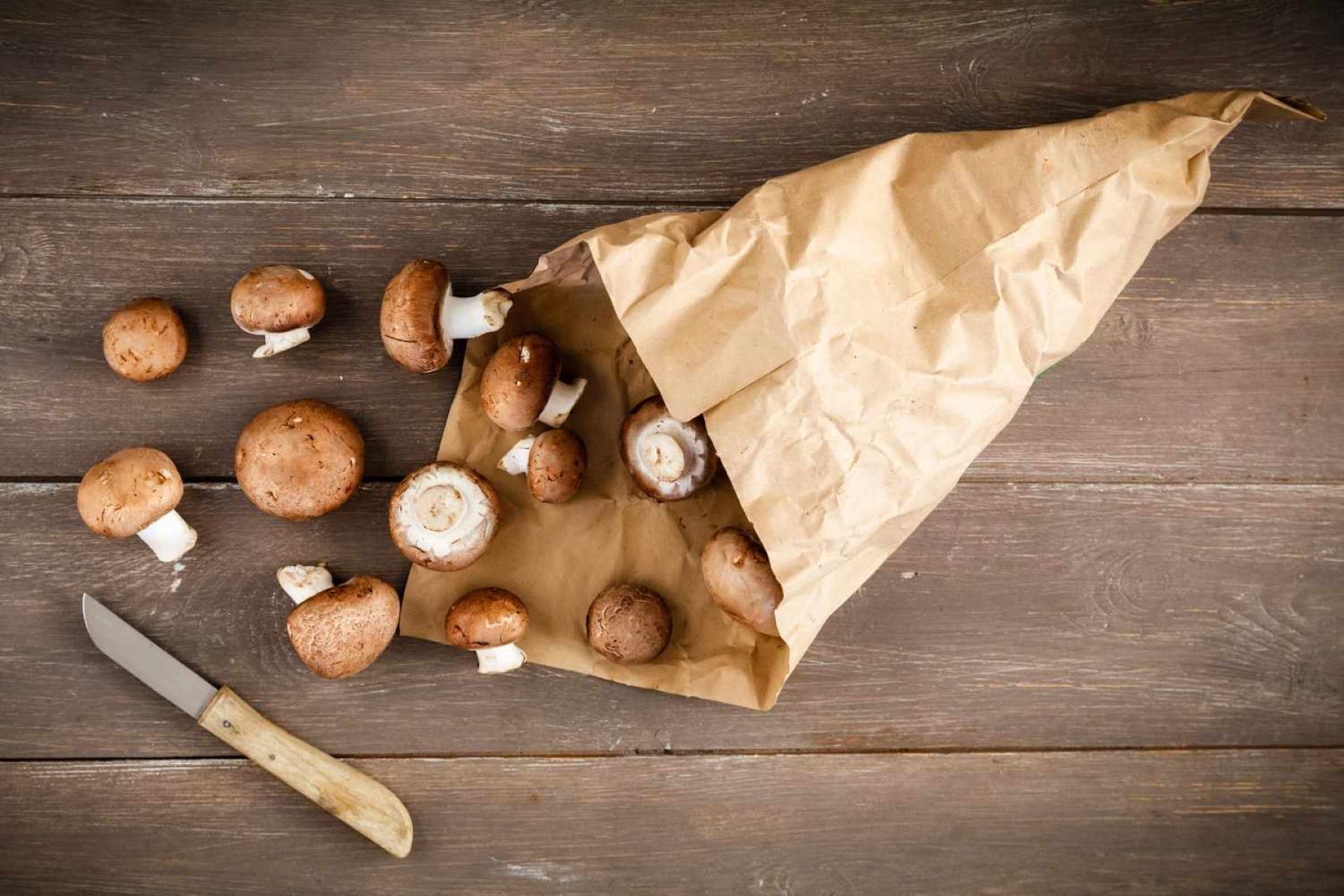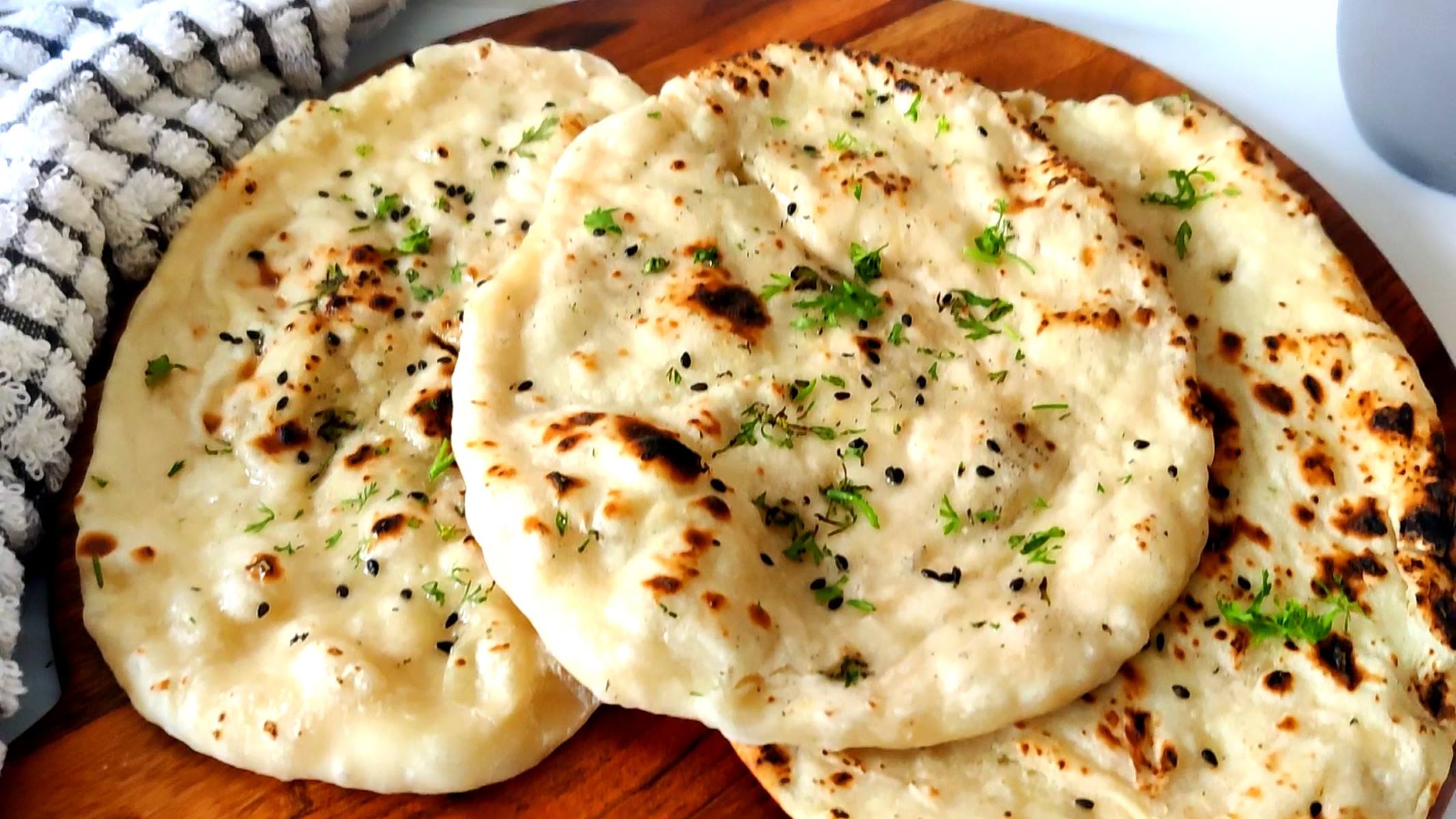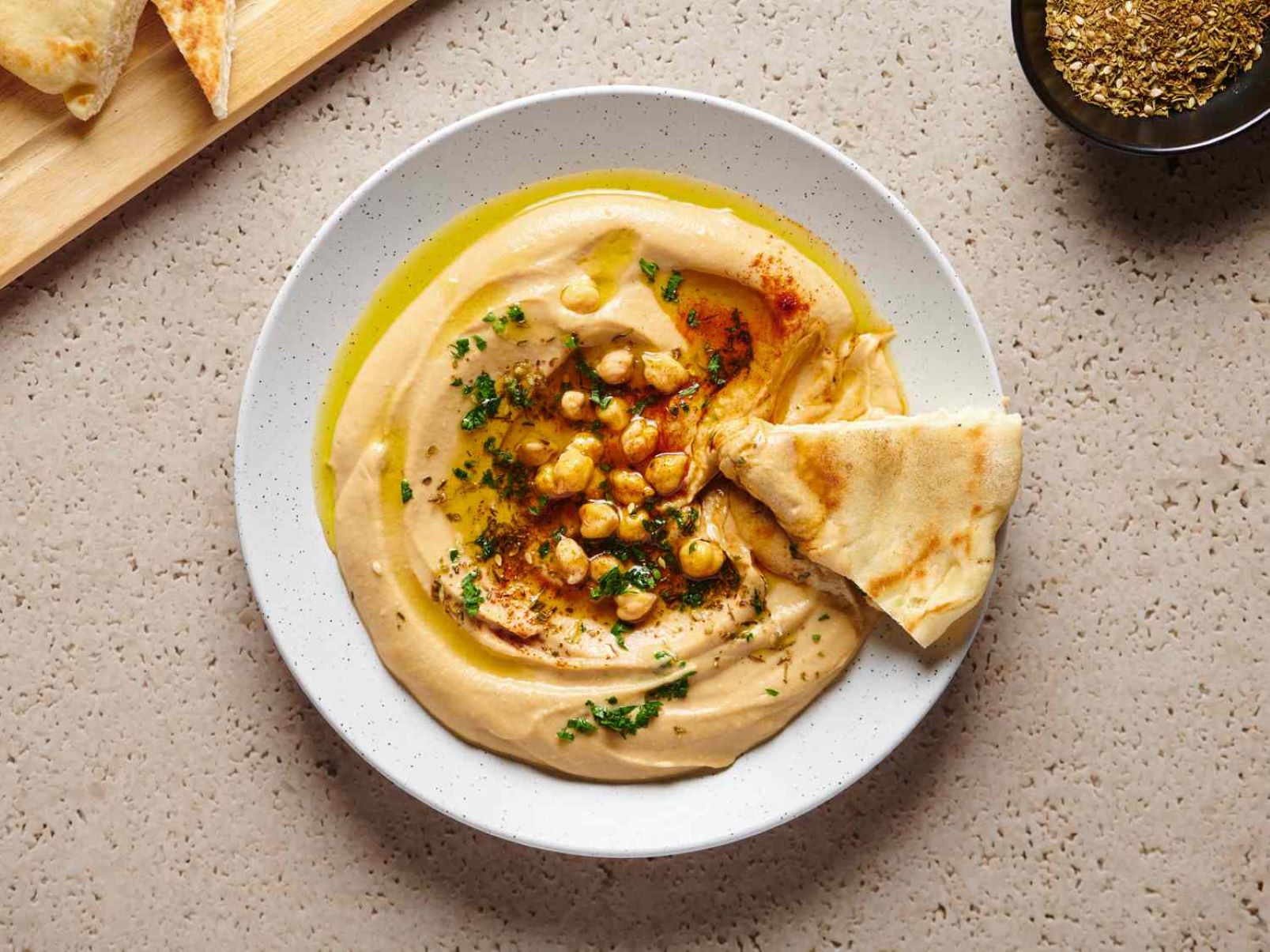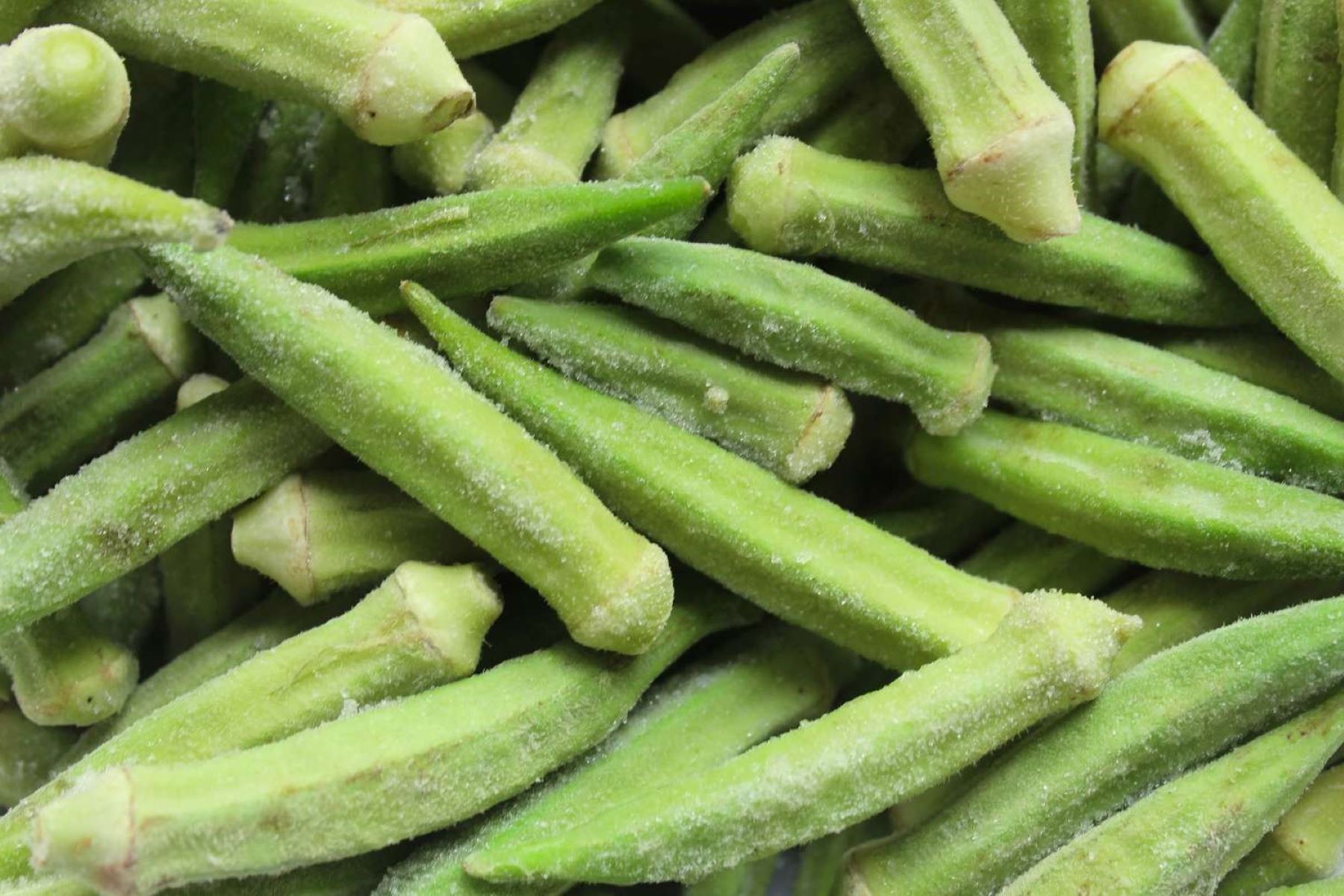Home>Food and Cooking>The Ultimate Guide To Freezing Mushrooms: Preserve Potency And Texture Like A Pro!


Food and Cooking
The Ultimate Guide To Freezing Mushrooms: Preserve Potency And Texture Like A Pro!
Published: January 16, 2024
Learn how to freeze mushrooms like a pro with our ultimate guide. Preserve their potency and texture for delicious cooking. Perfect for food and cooking enthusiasts!
(Many of the links in this article redirect to a specific reviewed product. Your purchase of these products through affiliate links helps to generate commission for Regretless.com, at no extra cost. Learn more)
Table of Contents
Introduction
Freezing mushrooms is a fantastic way to extend the shelf life of these delectable fungi while preserving their flavor, texture, and nutritional value. Whether you have an abundance of fresh mushrooms from your garden or want to take advantage of a great deal at the market, freezing them can help prevent waste and ensure that you always have this versatile ingredient on hand.
Mushrooms are not only a delicious addition to a wide range of dishes, but they also offer numerous health benefits. They are low in calories, high in protein, and packed with essential nutrients such as vitamins, minerals, and antioxidants. By freezing mushrooms at their peak freshness, you can lock in these valuable nutrients and enjoy their goodness in your meals throughout the year.
In this comprehensive guide, we will delve into the art of freezing mushrooms, providing you with expert tips and techniques to help you preserve their potency and texture like a pro. From selecting the right mushrooms for freezing to preparing and storing them properly, you will gain valuable insights that will empower you to make the most of this preservation method. Additionally, we will explore the various methods for freezing mushrooms and share practical tips for thawing and using them effectively.
Whether you are a culinary enthusiast looking to elevate your cooking skills or someone who simply wants to reduce food waste and save money, mastering the art of freezing mushrooms will open up a world of culinary possibilities. Get ready to embark on a journey to discover the secrets of freezing mushrooms and elevate your culinary prowess to new heights!
Benefits of Freezing Mushrooms
Freezing mushrooms offers a myriad of benefits that make it a valuable preservation method for this versatile ingredient. Here are some compelling reasons to consider freezing mushrooms:
-
Extended Shelf Life: By freezing mushrooms at their peak freshness, you can significantly extend their shelf life. This allows you to stock up on mushrooms when they are in season or on sale, ensuring that you always have this flavorful ingredient available for your culinary endeavors.
-
Preservation of Freshness: Freezing mushrooms preserves their natural freshness, flavor, and nutritional value. Unlike other preservation methods that may compromise the texture and taste of mushrooms, freezing allows them to retain their original qualities, making them a delightful addition to a wide range of dishes.
-
Reduction of Food Waste: Freezing mushrooms is an effective way to minimize food waste. Instead of allowing fresh mushrooms to spoil or degrade in quality, freezing them enables you to use them at your convenience, thereby reducing the likelihood of discarding unused or spoiled mushrooms.
-
Convenient Meal Preparation: Having a stash of frozen mushrooms on hand makes meal preparation more convenient and efficient. Whether you're whipping up a quick stir-fry, adding depth to a savory soup, or creating a gourmet pasta dish, having frozen mushrooms readily available can streamline the cooking process and inspire culinary creativity.
-
Cost-Effective Solution: Freezing mushrooms allows you to take advantage of bulk purchases or seasonal abundance, enabling you to save money in the long run. By freezing mushrooms when they are at their freshest and most affordable, you can enjoy their goodness throughout the year without incurring additional costs.
-
Nutritional Retention: When mushrooms are frozen properly, they retain their nutritional value, including essential vitamins, minerals, and antioxidants. This means that you can continue to benefit from the health-promoting properties of mushrooms even after they have been frozen.
-
Versatile Ingredient Availability: By freezing mushrooms, you can ensure a steady supply of this versatile ingredient for various culinary applications. Whether you use them in soups, sauces, casseroles, or as a topping for pizzas and omelets, having frozen mushrooms on hand opens up a world of culinary possibilities.
In summary, the benefits of freezing mushrooms are multifaceted, encompassing extended shelf life, preservation of freshness, reduction of food waste, convenience in meal preparation, cost-effectiveness, retention of nutritional value, and versatile availability as a culinary ingredient. By harnessing the power of freezing, you can maximize the potential of mushrooms and elevate your culinary experiences.
Choosing the Right Mushrooms for Freezing
When it comes to freezing mushrooms, selecting the right varieties is essential to ensure optimal results. Not all mushrooms are well-suited for freezing, and certain types may yield better texture and flavor when subjected to this preservation method. Here are some key considerations to keep in mind when choosing mushrooms for freezing:
Freshness is Key:
Choose fresh, high-quality mushrooms that are free from blemishes, bruises, or signs of spoilage. Look for mushrooms that are firm to the touch with a smooth surface. Avoid mushrooms that appear slimy, discolored, or have a strong, unpleasant odor, as these may indicate deterioration.
Suitable Mushroom Varieties:
While most common mushroom varieties can be frozen, certain types are particularly well-suited for freezing due to their texture and resilience. Varieties such as button mushrooms, cremini mushrooms, and portobello mushrooms freeze exceptionally well, retaining their firmness and flavor after thawing. These versatile varieties are widely available and are popular choices for freezing.
Avoid Delicate Mushrooms:
Mushrooms with delicate textures, such as morel mushrooms or chanterelle mushrooms, may not fare as well when frozen. These delicate varieties are prized for their unique textures and flavors, which may be compromised by the freezing process. It's best to enjoy delicate mushrooms fresh or explore alternative preservation methods, such as drying, to maintain their distinct qualities.
Consider Cooking Applications:
Consider the intended use of the frozen mushrooms when making your selection. If you plan to incorporate them into cooked dishes such as soups, stews, or stir-fries, robust mushroom varieties that hold up well to heat and moisture are ideal. For raw applications, such as adding frozen mushrooms to salads or sandwiches, choose varieties that offer a pleasant texture and flavor even when frozen.
Wild Mushrooms and Safety:
If you forage for wild mushrooms, exercise caution when considering them for freezing. Not all wild mushrooms are suitable for freezing, and some may require specific preparation methods to ensure safety. It's important to accurately identify wild mushrooms and be aware of any special considerations for freezing them to avoid potential health risks.
By carefully selecting the right mushrooms for freezing based on freshness, suitability for freezing, cooking applications, and safety considerations, you can set the stage for successful mushroom preservation. With the proper selection of mushrooms, you can embark on the freezing process with confidence, knowing that the resulting frozen mushrooms will uphold their quality and enhance your culinary endeavors.
Preparing Mushrooms for Freezing
Properly preparing mushrooms for freezing is crucial to ensure that they maintain their quality and integrity throughout the freezing process. By following these essential steps, you can maximize the potential of frozen mushrooms and set the stage for culinary success.
Cleaning and Trimming:
Begin by gently cleaning the mushrooms to remove any dirt, debris, or residual substrate. Avoid soaking the mushrooms in water, as they can easily absorb moisture, which may affect their texture when frozen. Instead, use a soft brush or damp paper towel to gently wipe the mushrooms, ensuring thorough cleaning while minimizing moisture exposure.
Next, trim the mushroom stems as needed. While some recipes may call for whole mushrooms, trimming the stems allows for more uniform freezing and facilitates even cooking when the mushrooms are later used in dishes. Use a sharp knife to trim the stems, taking care to maintain the desired size and shape of the mushrooms.
Slicing or Dicing (Optional):
Depending on your culinary preferences and intended applications, you may choose to slice or dice the mushrooms before freezing. Sliced or diced mushrooms can be convenient for specific recipes and can expedite meal preparation. If you opt to slice or dice the mushrooms, ensure that the pieces are uniform in size to promote even freezing and consistent texture when thawed.
Blanching (Optional):
While not always necessary, blanching mushrooms before freezing can help preserve their color, texture, and flavor. To blanch mushrooms, briefly submerge them in boiling water for a short period, usually 1-2 minutes, then promptly transfer them to an ice water bath to halt the cooking process. After blanching, thoroughly drain the mushrooms to remove excess moisture before freezing.
Packaging for Freezing:
Once the mushrooms are cleaned, trimmed, and optionally blanched, it's time to package them for freezing. Use airtight containers or freezer-safe resealable bags to store the mushrooms, ensuring that they are properly sealed to prevent freezer burn and protect them from absorbing odors. Consider portioning the mushrooms according to your typical usage, which can streamline meal preparation and minimize thawing excess quantities.
Labeling and Dating:
Before placing the packaged mushrooms in the freezer, label the containers or bags with the contents and date of freezing. Proper labeling allows for easy identification and ensures that you can use the oldest mushrooms first, maintaining freshness and quality. Additionally, consider including any specific details, such as the mushroom variety or any additional preparation steps taken, to enhance organization and facilitate efficient usage.
By meticulously preparing mushrooms for freezing through cleaning, trimming, optional slicing or blanching, careful packaging, and thorough labeling, you can lay the groundwork for successful mushroom preservation. These preparatory steps not only contribute to the quality of the frozen mushrooms but also streamline their utilization in a wide array of culinary creations, empowering you to harness the full potential of this versatile ingredient.
Methods for Freezing Mushrooms
When it comes to freezing mushrooms, there are several effective methods to choose from, each offering unique advantages and considerations. By understanding these methods, you can select the approach that best suits your preferences and culinary needs. Here are the primary methods for freezing mushrooms:
Flash Freezing:
Flash freezing involves spreading cleaned and trimmed mushrooms in a single layer on a baking sheet or tray and placing them in the freezer until they are partially frozen. Once the mushrooms are partially frozen, transfer them to airtight containers or freezer-safe bags for long-term storage. Flash freezing individual mushroom pieces allows them to maintain their shape and prevents them from clumping together, making it easier to portion out smaller quantities as needed.
Freezing in Liquid:
Another method involves freezing mushrooms in a liquid, such as water or broth, which can help preserve their texture and flavor. To use this method, blanch the mushrooms briefly, then submerge them in a suitable liquid before transferring them to freezer-safe containers. Freezing mushrooms in liquid can help protect them from freezer burn and maintain their moisture content, making them well-suited for use in soups, stews, and sauces.
Vacuum Sealing:
Vacuum sealing is an effective method for preserving mushrooms, as it removes air from the packaging, helping to prevent freezer burn and maintain the quality of the mushrooms. After cleaning and preparing the mushrooms, place them in vacuum-seal bags and use a vacuum sealer to remove air and create a tight seal. Vacuum-sealed mushrooms can be conveniently stored in the freezer, maintaining their freshness and flavor for an extended period.
Freezing in Recipes:
If you have specific dishes in mind that call for mushrooms, consider preparing those recipes and freezing them as complete meals or components. For example, you can make mushroom-based sauces, casseroles, or soups, then portion them into freezer-safe containers for later use. Freezing mushrooms in prepared recipes can streamline meal preparation and ensure that the flavors are well-developed when thawed and reheated.
Considerations:
When choosing a freezing method, consider the intended use of the mushrooms and your storage preferences. Each method offers distinct benefits, and the optimal approach may depend on factors such as available storage space, planned culinary applications, and personal convenience. Additionally, proper packaging and labeling are essential regardless of the chosen method, as they contribute to organization and efficient usage of frozen mushrooms.
By familiarizing yourself with these methods for freezing mushrooms, you can make informed decisions based on your culinary aspirations and storage capabilities. Whether you opt for flash freezing, freezing in liquid, vacuum sealing, or preparing recipes for freezing, each method presents an opportunity to preserve mushrooms at their peak freshness and enjoy their delightful flavors in a wide range of culinary creations.
Storing Frozen Mushrooms
Once you have successfully frozen your mushrooms using the method of your choice, proper storage is essential to maintain their quality and integrity over time. By following these guidelines, you can ensure that your frozen mushrooms remain in optimal condition for future use.
Airtight Containers or Freezer Bags
Transfer the frozen mushrooms into airtight containers or freezer-safe bags, ensuring that they are sealed securely to prevent air exposure. Proper sealing is crucial for protecting the mushrooms from freezer burn and preserving their texture and flavor.
Portioning for Convenience
Consider portioning the frozen mushrooms according to your typical usage or recipe requirements. This can streamline meal preparation and minimize the need to thaw larger quantities than necessary. Individual or small portions allow for greater flexibility in utilizing the frozen mushrooms.
Labeling and Dating
Before placing the containers or bags in the freezer, label them with the contents and date of freezing. Clear labeling enables easy identification and ensures that you can use the oldest mushrooms first, maintaining freshness and quality. Including specific details, such as the mushroom variety or any additional preparation steps taken, can further enhance organization and facilitate efficient usage.
Freezer Placement
Store the frozen mushrooms in the coldest part of the freezer to maintain a consistent temperature. Avoid placing them near the freezer door or in areas where they may be subject to temperature fluctuations. Proper freezer placement helps preserve the quality of the frozen mushrooms over an extended period.
Freezer Shelf Life
While frozen mushrooms can retain their quality for an extended period, it's advisable to use them within a reasonable timeframe to ensure optimal flavor and texture. As a general guideline, aim to use the frozen mushrooms within 6 to 12 months for the best results.
By adhering to these storage practices, you can safeguard the quality of your frozen mushrooms and maximize their potential for enhancing a diverse array of culinary creations. With proper storage, your frozen mushrooms will be readily available to elevate your dishes with their delightful flavors and versatile applications.
Thawing and Using Frozen Mushrooms
Thawing frozen mushrooms properly is essential to ensure that they retain their texture and flavor for use in various culinary applications. When it comes to thawing frozen mushrooms, there are several methods to consider, each offering unique advantages based on your specific cooking needs. Here are the recommended approaches for thawing and using frozen mushrooms:
Refrigerator Thawing:
Thawing frozen mushrooms in the refrigerator is a gradual and gentle method that allows them to defrost slowly while maintaining their texture and flavor. To thaw mushrooms in the refrigerator, simply transfer the sealed container or bag of frozen mushrooms to the refrigerator and allow them to thaw overnight or for several hours. This method is ideal for recipes that require rehydrated mushrooms or for dishes where texture is crucial, such as sautés, stews, and pasta dishes.
Room Temperature Thawing:
If you need to thaw frozen mushrooms quickly, you can opt for room temperature thawing. Place the sealed container or bag of frozen mushrooms on the kitchen counter and allow them to thaw at room temperature. Keep in mind that this method should be used for immediate use, as it accelerates the thawing process. Room temperature thawing is suitable for recipes that call for immediate cooking, such as stir-fries, omelets, or quick sautés.
Cooking from Frozen:
In some recipes, especially those that involve high heat cooking methods such as stir-frying or sautéing, you can add frozen mushrooms directly to the pan without thawing. Cooking frozen mushrooms from their frozen state can be convenient and time-saving, as they will release moisture and cook quickly. This method is particularly useful for adding mushrooms to dishes with short cooking times, ensuring that they retain their texture and flavor.
Using Thawed Mushrooms:
Once the frozen mushrooms are thawed, they can be used in a wide range of dishes, including soups, sauces, casseroles, and more. Thawed mushrooms can be sautéed, roasted, or added directly to recipes, providing a burst of umami flavor and a delightful meaty texture. Whether you're creating a gourmet pizza, a hearty stew, or a flavorful risotto, thawed mushrooms can elevate your culinary creations with their rich and earthy essence.
By selecting the appropriate thawing method based on your immediate cooking needs and utilizing the thawed mushrooms in diverse recipes, you can fully leverage the convenience and versatility of frozen mushrooms. Whether you thaw them in the refrigerator for gradual rehydration, at room temperature for immediate use, or directly in the cooking process, frozen mushrooms offer a convenient and flavorful ingredient to enhance your culinary repertoire.
Tips for Freezing Mushrooms Like a Pro
-
Select Peak Freshness: Choose mushrooms at their peak freshness for optimal results. Look for firm, blemish-free specimens with a smooth surface, ensuring that they are free from signs of spoilage.
-
Proper Cleaning: Gently clean the mushrooms using a soft brush or damp paper towel to remove any dirt or debris. Avoid soaking them in water to prevent moisture absorption, which can impact their texture when frozen.
-
Uniform Slicing: If you opt to slice or dice the mushrooms, ensure that the pieces are uniform in size. This promotes even freezing and facilitates consistent texture when thawed, enhancing their versatility in various recipes.
-
Consider Blanching: While optional, blanching mushrooms before freezing can help preserve their color, texture, and flavor. Briefly submerge the mushrooms in boiling water, followed by an ice water bath, then drain thoroughly before freezing.
-
Flash Freezing Technique: Utilize the flash freezing method by spreading cleaned and trimmed mushrooms in a single layer on a baking sheet. Partially freeze them before transferring to airtight containers or freezer-safe bags to prevent clumping.
-
Vacuum Sealing Benefits: Consider vacuum sealing the mushrooms to remove air from the packaging, safeguarding them from freezer burn and maintaining their freshness and flavor over an extended period.
-
Labeling and Dating: Prior to freezing, label the containers or bags with the contents and date of freezing. Include specific details such as the mushroom variety or any additional preparation steps taken to enhance organization and facilitate efficient usage.
-
Portioning for Convenience: Portion the frozen mushrooms according to your typical usage or recipe requirements. This streamlines meal preparation and minimizes the need to thaw larger quantities than necessary.
-
Optimal Freezer Placement: Store the frozen mushrooms in the coldest part of the freezer to maintain a consistent temperature. Avoid placing them near the freezer door or in areas subject to temperature fluctuations.
-
Thawing Considerations: When thawing frozen mushrooms, select the method that best suits your immediate cooking needs, whether it's gradual refrigerator thawing, room temperature thawing for immediate use, or cooking from frozen for quick and convenient meal preparation.
By implementing these expert tips for freezing mushrooms, you can elevate your preservation efforts and ensure that the frozen mushrooms maintain their quality, flavor, and texture, empowering you to unleash their culinary potential in a myriad of delightful dishes.
Conclusion
In conclusion, mastering the art of freezing mushrooms empowers culinary enthusiasts and home cooks to harness the full potential of this versatile ingredient while minimizing waste and ensuring a steady supply of flavorful additions to a wide range of dishes. By carefully selecting the right mushrooms for freezing based on freshness, suitability for freezing, and intended applications, individuals can embark on the freezing process with confidence, knowing that the resulting frozen mushrooms will uphold their quality and enhance culinary endeavors.
The benefits of freezing mushrooms are multifaceted, encompassing extended shelf life, preservation of freshness, reduction of food waste, convenience in meal preparation, cost-effectiveness, retention of nutritional value, and versatile availability as a culinary ingredient. By leveraging the benefits of freezing, individuals can make the most of seasonal abundance, take advantage of cost-effective bulk purchases, and ensure that mushrooms are readily available for creative culinary pursuits throughout the year.
Properly preparing mushrooms for freezing through meticulous cleaning, trimming, optional slicing or blanching, careful packaging, and thorough labeling sets the stage for successful mushroom preservation. These preparatory steps not only contribute to the quality of the frozen mushrooms but also streamline their utilization in a wide array of culinary creations, empowering individuals to elevate their dishes with the delightful flavors and textures of mushrooms.
Understanding the various methods for freezing mushrooms, including flash freezing, freezing in liquid, vacuum sealing, and preparing recipes for freezing, provides individuals with options to suit their storage capabilities and culinary aspirations. Each method presents an opportunity to preserve mushrooms at their peak freshness and enjoy their delightful flavors in a wide range of culinary creations.
Furthermore, proper storage practices, including the use of airtight containers or freezer bags, portioning for convenience, labeling and dating, optimal freezer placement, and adherence to recommended freezer shelf life, safeguard the quality of frozen mushrooms and maximize their potential for enhancing diverse culinary creations.
Lastly, the recommended approaches for thawing and using frozen mushrooms, whether through refrigerator thawing, room temperature thawing, cooking from frozen, or utilizing thawed mushrooms in various recipes, offer convenience and versatility in incorporating frozen mushrooms into culinary endeavors.
In essence, the art of freezing mushrooms empowers individuals to extend the shelf life of this delightful ingredient, minimize food waste, and elevate their culinary experiences with the rich and earthy flavors of mushrooms. By embracing the techniques, tips, and considerations outlined in this comprehensive guide, individuals can embark on a journey to preserve mushrooms like a pro, unlocking a world of culinary possibilities and ensuring that the essence of mushrooms enriches their dishes year-round.








